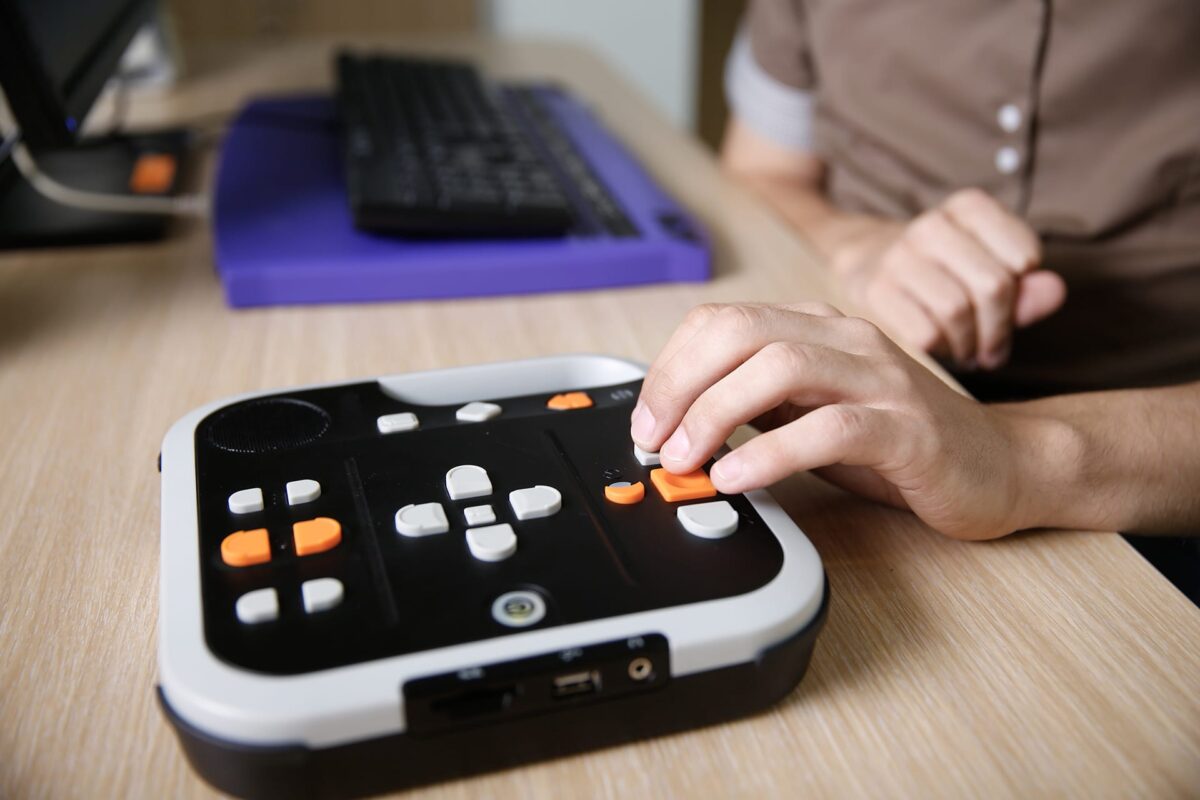Uncategorized, Website
What Website Accessibility Really Means and What You Should Know
If you run a business with a website, you’ve likely heard the term “accessibility” come up more frequently in recent years. Many of my clients are asking smart, forward-thinking questions like: Are there best practices I should know about to make sure my content is usable and inclusive?
These questions are rooted in the growing awareness that digital spaces should be as inclusive as physical ones. Website accessibility isn’t about meeting a legal checkbox, it’s about ensuring that people of all abilities can interact with your business online. That includes individuals who use screen readers, rely on keyboard navigation, or need visual or cognitive support to navigate digital content.
In the early 90s, my grandma was diagnosed with macular degeneration, a progressive eye condition that gradually steals vision, making everyday tasks like reading, recognizing faces, or seeing fine details increasingly difficult. As her sight dwindled, she lost many of the small joys and routines she once cherished: reading the newspaper and funny pages, paperback novels from the church flea market, even reading food labels to check for allergens. Accessibility tools were scarce then, so my grandpa built a makeshift magnifier with a camcorder and TV, allowing her to enlarge print and objects onto the screen. It wasn’t high-tech, but it gave her years of continued connection to the written world. During that time the internet was was becoming more mainstream and although my grandma never was a web surfer, witnessing how simple accommodations could restore parts of her independence has stuck with me. That experience shaped how I view accessibility: not just as a compliance checklist, but as a powerful way to meet people where they are and enrich their everyday lives.
What Is Website Accessibility?
In the most basic terms, accessibility means designing and developing your site so that people with disabilities can use it effectively. This includes users who are blind, have low vision, are deaf or hard of hearing, have limited mobility, or experience cognitive challenges like ADHD or dyslexia. Accessible design means making sure your website isn’t creating digital roadblocks for these users.
But accessibility isn’t only about disability, it improves usability for everyone. Think about captions on videos helping viewers in noisy environments, or high-contrast text aiding users with aging eyes. These features create better experiences all around.

How Does Design Fit Into Accessibility?
As a website designer, accessibility often requires thoughtful choices, some of which challenge conventional aesthetics. Elements like super light text over images, text embedded in images, low contrast color palettes, or hover-only interactions might look beautiful, but they don’t always translate well across all users or assistive devices.
Incorporating accessible design doesn’t mean your website can’t be visually compelling, it means being intentional about how function and form coexist. For example, accessible design often favors:
-
Clean, structured layouts
-
Clear typography
-
Descriptive link text
-
Interactive elements that work without a mouse
Design can still be stunning, it just has to work for everyone.
Is There a Checklist or Legal Standard?
There’s no single law or checklist that governs every website, but the Web Content Accessibility Guidelines (WCAG) are the gold standard. They’re internationally recognized and offer extensive, technical guidance. You can explore the full WCAG guidelines here but don’t worry, this is meant to inform, not overwhelm. Not every site can (or needs to) be 100% compliant at every level, and in fact, it’s nearly impossible to achieve total perfection. Most experts agree that striving toward WCAG 2.1 AA compliance is a solid and responsible goal for small businesses and service providers.
5 Practical Ways to Make Your Website More Accessible
If you’re ready to make a few meaningful improvements, start here:
-
Add Alt Text to All Images
Describe what’s in each image so screen readers can communicate it to users who can’t see them. -
Use Clear Heading Hierarchy
Headings help structure your content and assist screen readers with navigation. Use heading tags (H1, H2, H3, etc.) to organize content. It makes your site easier to navigate for screen readers and humans. -
Ensure Adequate Color Contrast
Make sure your text stands out from its background. It’s one of the easiest ways to improve readability. -
Make Navigation Keyboard-Friendly
All interactive elements should be accessible using just a keyboard, not just a mouse or touchscreen. -
Include Captions and Transcripts for Media
Videos and audio content should be accessible to those who are deaf, hard of hearing, or who prefer text.
A Note About Fear-Based Emails and Legal Threats
If you’ve ever received a scary-sounding email claiming your website violates accessibility laws and threatening legal action, take a deep breath before clicking any links or responding. These messages often prey on fear and confusion around accessibility standards, and many are either phishing scams or overly aggressive sales tactics. While accessibility lawsuits are a real concern in some industries, they are rare and typically focus on larger companies or those with persistent, documented accessibility barriers. If you’re making a good-faith effort to improve your website, you’re already ahead of the curve. (Disclaimer: I am not a lawyer, if you receive a legitimate legal notice, always consult with a qualified attorney.)
Final Thoughts
Accessibility is an ongoing practice, not a one-time project. Your website doesn’t need to be perfect, but it should aim to be better. Starting with small changes can make a huge difference and signal to your visitors that your business values inclusion and usability.
Want to make your website more welcoming to everyone or not sure where your site stands?
→ Let’s take a look and talk about a strategy that aligns with your goals and audience.

